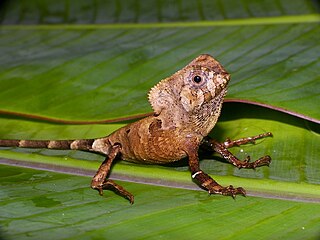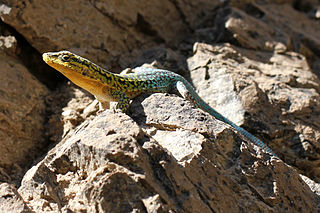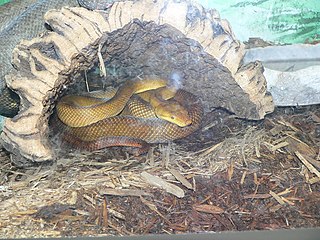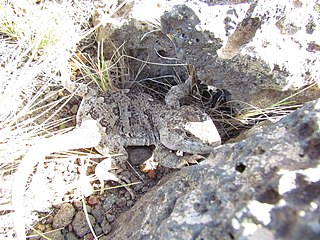
Homonota is a genus of South American geckos, commonly known as marked geckos.

Corytophanes is a genus of Neotropical lizards, commonly referred to as helmeted iguanas or helmeted basilisks, in the family Corytophanidae. The genus contains three species, all of which are arboreal, and reside in tropical forests.

Laemanctus is a genus of lizards in the family Corytophanidae. Species in the genus Laemanctus are commonly referred to as conehead lizards or casquehead iguanas. The genus is endemic to Central America.

Leiosaurus is a genus of lizards in the family Leiosauridae. The genus is endemic to South America.

Liolaemus is a genus of iguanian lizards, containing many species, all of which are endemic to South America.

Microlophus is a genus of tropidurid lizards native to South America. Around 20 species are recognized and six of these are endemic to the Galápagos Islands, where they are commonly known as lava lizards. The remaining, which often are called Pacific iguanas, are found in the Andes and along the Pacific coasts of Chile, Peru, and Ecuador.

The Puelche were indigenous peoples living east of the Andes Mountains in Chile and Southwest Argentina in the 18th century. They spoke the Puelche language. The name "Puelche" was not native, but was given to them by the Mapuche. They were annihilated by plagues and epidemics in the late 18th century, with survivors merging into other groups such as the Mapuche, Het, and Tehuelche.

Darwin's rhea, also known as the lesser rhea, is a large flightless bird, the smaller of the two extant species of rheas. It is found in the Altiplano and Patagonia in South America.

Chondrodactylus bibronii, commonly known as Bibron's thick-toed gecko, Bibron's sand gecko, or simply Bibron's gecko, is a species of lizard in the family Gekkonidae. The species is native to southern Africa. C. bibronii has been used as an animal model in bioastronautic research examining the effects of spaceflight on the morphology and physiology of vertebrates.
Liolaemus gravenhorstii, commonly known as Gravenhorst's tree iguana, is a species of lizard in the family Iguanidae. The species is endemic to South America.
Liolaemus paulinae is a species of lizard in the family Liolaemidae.

Stenocercus is a genus of South American lizards, commonly called whorltail iguanas, of the family Tropiduridae. This genus has 75 valid described species.

Candoia bibroni is a nonvenomous boa species endemic to Melanesia and Polynesia. Two subspecies are currently recognized, including the nominate subspecies described here.

Darwin's ringed worm lizard is a species of reptile in the family Amphisbaenidae. The species is endemic to South America.

Oplurus cuvieri, commonly known as the collared iguanid lizard, collared iguana, Madagascan collared iguana, or Cuvier's Madagascar swift, is a species of arboreal Malagasy iguana, the largest of six species in the genus Oplurus.

Microlophus grayii, commonly known as the Floreana lava lizard, is a species of lava lizard in the family Tropiduridae. The species is endemic to the Galapagos island of Floreana.

Liolaemus darwinii is a species of iguanid lizard endemic to Argentina.

Diplolaemus darwinii, commonly known as Darwin's iguana, is a species of lizards native to the southern tip of South America.
Diplolaemus leopardinus, commonly known as the leopard iguana or the leopard grumbler, is a species of lizard native to the southern tip of South America.

Cercosaura schreibersii, known commonly as Schreibers's many-fingered teiid or the long-tailed little lizard, is a species of lizard in the family Gymnophthalmidae. The species is endemic to South America.


















